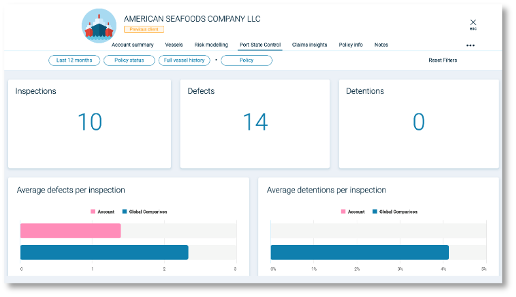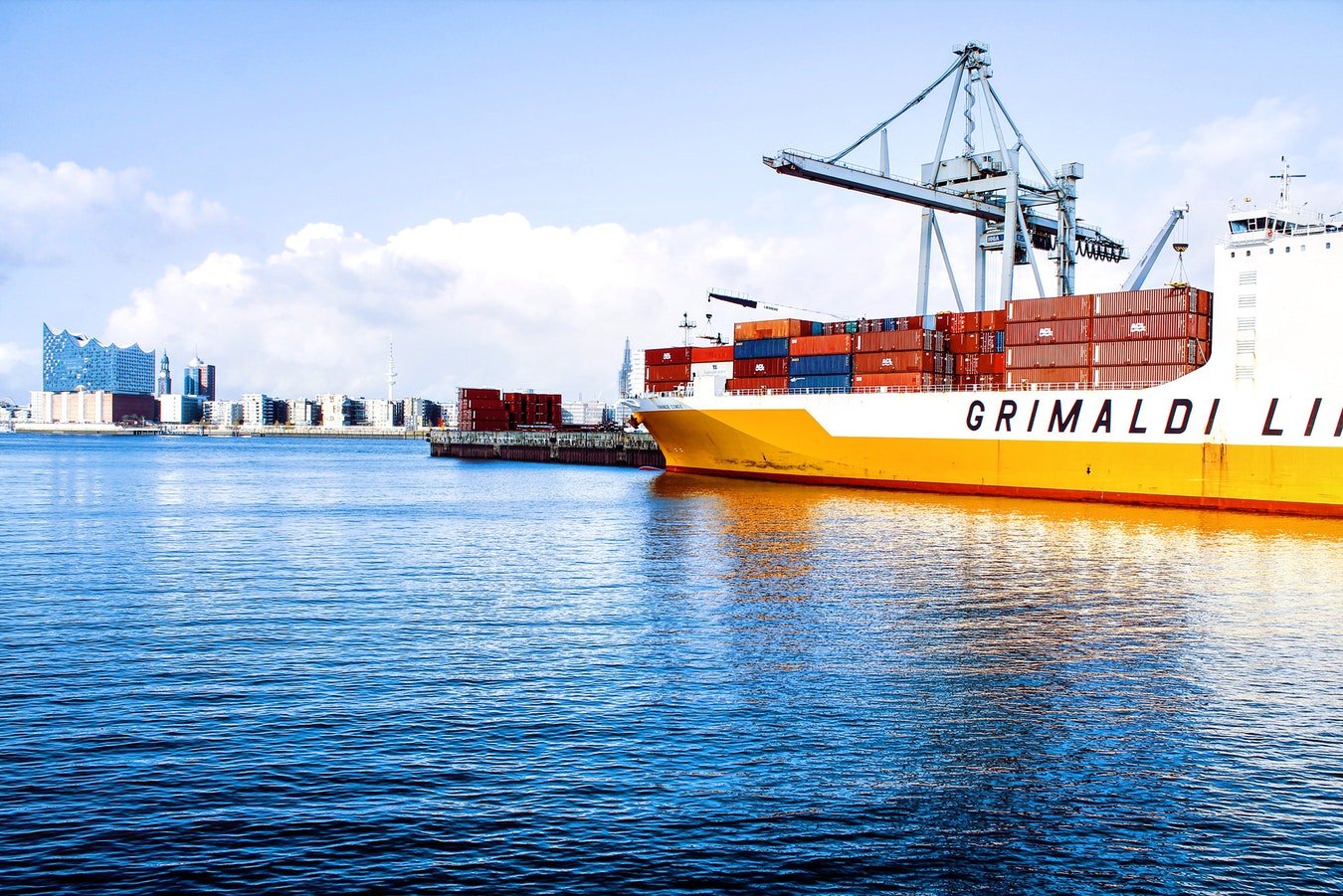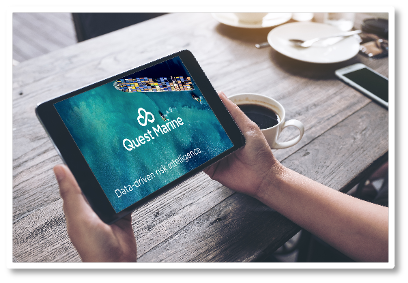Port State Control
What can you expect to see
Port State Control provides a complete view of inspections, defects and detentions relating to vessels across an account.

A breakdown of inspections
Underwriters can easily assess the risk profile of an operator or vessel in relation to vessel maintenance and structure policies. Brokers can use Port State Control information to better understand how to shape negotiations. Performance is assessed relative to global benchmarks by specification. This allows the vessel or account in question to be measured against the global fleet of that vessel type.
Inspection performance and risk profile
The percentage frequency at which a vessel or fleet (at account level) passes inspections indicates how well, or poorly, the vessel/fleet is performing. There are three pass types: without defects, with less than expected defects, or more than expected defects. The benchmark difference for each type of pass demonstrates performance vs the global fleet. Underwriters can see whether the vessel in question is hitting standards or is a cause for concern.
Benchmarks are also used to assess how the average defects or detentions per inspection influence casualty risk, indicating the likelihood of associated claims.


Detail behind defects that lead to detentions
Understanding the type of defects occurring within a vessel can uncover the potential severity of a future claim. Quest Marine lists all defects, regardless of whether a detention occurs. An inspections list details the date, port name, country, authorisation, and number of defects seen within each inspection for a vessel/account. Selecting an inspection from the list provides further information regarding the ship at the time, including owner, before offering a list of defects with logged actions. If a defect is repeatedly identified it can direct client-side actions to prevent recurrence.
An on-going view of risk
For those with access to the shipowner, such as P&I Clubs, trends that highlight a need for best practice improvements inform consultation directives. This helps improve a client’s risk profile whilst protecting other members. For Hull & Machinery underwriters, a comprehensive understanding can lead to the mitigation of high-risk variables that may go unseen. As real-time data provides further opportunities around a continuous view of risk, consultation will become universal. Inspection data can be evaluated as it takes place, so detentions and corrections can be carried out in line with set terms to maintain standards and limit future exposure.


We're here to help
Quest Marine gives Underwriters and Brokers access to port state control information in real-time. If you're looking for real-time marine risk information take a look at the Quest Marine platform.
News from Concirrus
What are the hot topics in InsurTech
Get up to speed with the latest information from the team at Concirrus, with regular guests from our customers and data partners.
